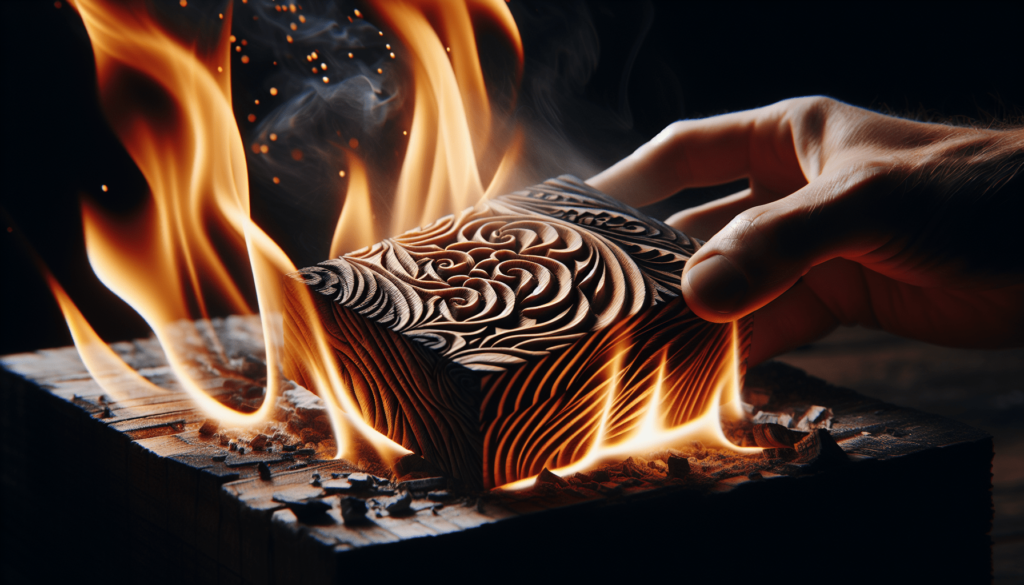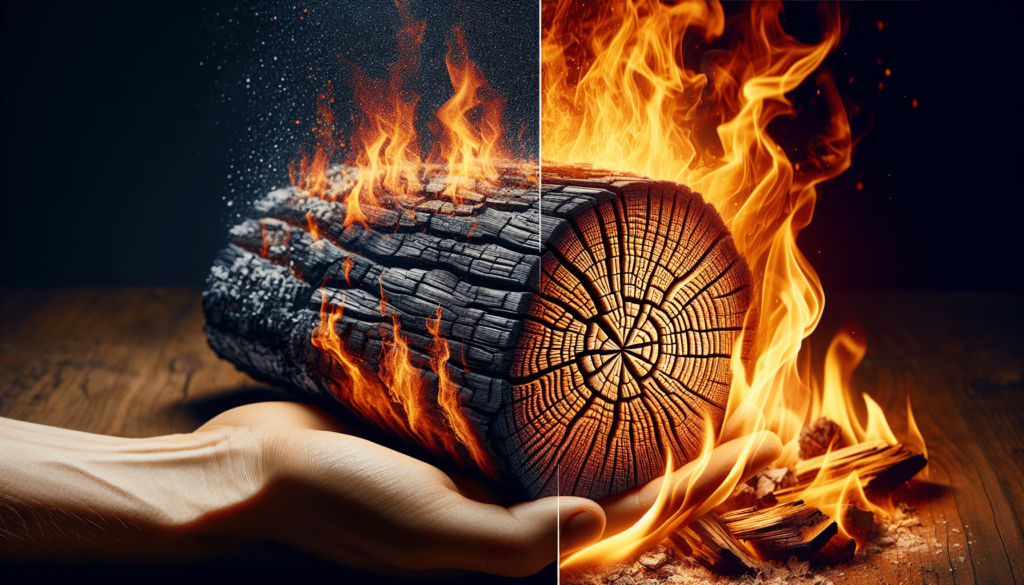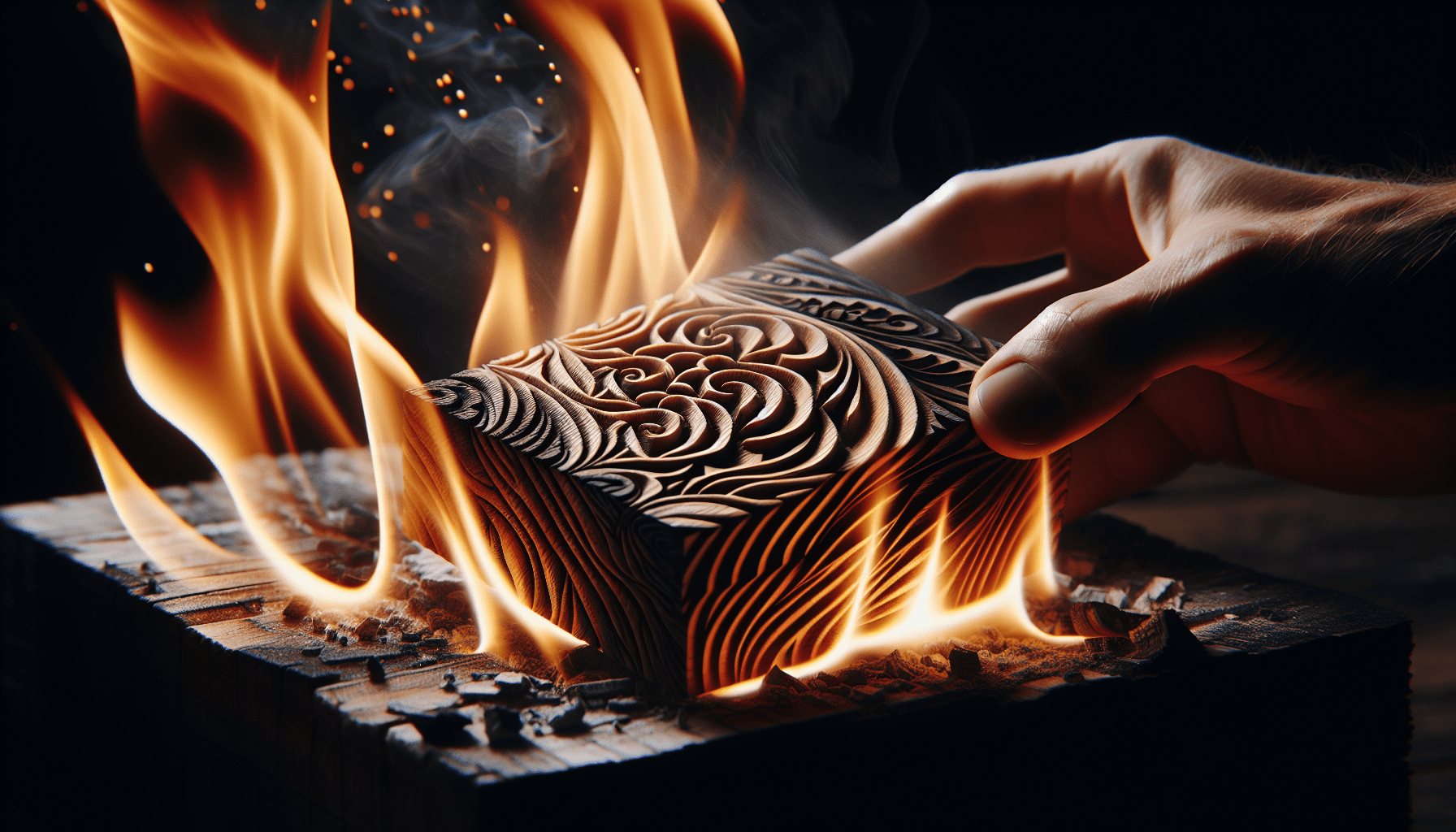Burning wood involves an intricate chemical reaction known as combustion. When I light a piece of wood on fire, it’s fascinating to watch how it transforms. The wood breaks down as it heats up, releasing gases and leaving behind that characteristic blackened char we call charcoal. The process is not just about creating heat and light; it involves a series of complex reactions that convert the organic compounds in the wood into carbon dioxide, water vapor, and ash. For me, understanding this process brings a whole new appreciation to a cozy campfire or a crackling fireplace. What do you call the process of burning wood?
It’s a question that’s probably crossed your mind while staring into the glowing embers of a campfire, or maybe when watching flames dance in your fireplace at home. I know it crossed mine. I once found myself entranced by the thought while roasting marshmallows, thinking how something so simple could warm our homes, cook our food, and even bring friends and family closer together. But there’s a scientific name for this seemingly magical process: it’s called “combustion.” Now, don’t let the fancy terminology scare you away; it’s just a technical name for something we see every day.

What is Combustion?
Combustion is essentially the chemical process that happens when wood—and other materials—burn. Sounds mundane, right? It’s actually a fascinating blend of chemistry, physics, and even biology. When wood burns, it undergoes a series of reactions that release energy in the form of heat and light.
Elements and Compounds in Wood
First off, let’s get to the root of what wood is made of. As ordinary as it seems, wood is composed of several complex organic compounds. The primary components are cellulose, hemicellulose, and lignin. It also contains smaller amounts of essential oils and resins. When burned, these substances break down, react with oxygen, and produce new compounds, including water, carbon dioxide, and ash.
| Component | Percentage in Wood |
|---|---|
| Cellulose | 40-50% |
| Hemicellulose | 20-30% |
| Lignin | 20-30% |
| Resins & Extractives | 1-5% |
Chemistry Behind Combustion
Here’s where the chemistry gets sizzling. Combustion of wood generally happens in three stages: dehydration, pyrolysis, and oxidation. Trust me, it’s less intimidating than it sounds.
-
Dehydration: In this initial phase, heat causes water in the wood to evaporate. Yep, wood has a fair bit of water in it, even if it feels dry.
-
Pyrolysis: Next, the wood starts to break down chemically. Pyrolysis is the thermal decomposition of materials at elevated temperatures in an inert atmosphere. Essentially, the wood turns into gas and char due to the heat.
-
Oxidation: Finally, these gas and char components react with the oxygen in the air, resulting in flames and smoldering. This is the part where you see the actual fire, and it’s also when you feel the heat.
Role of Oxygen
Ah, oxygen, the invisible partner in this dance of flames. While we mostly think of oxygen as the stuff we breathe, it’s also a key player in combustion. Without it, your fire pit would be a whole lot less exciting. When you blow on a fire to revive it, you’re supplying it with extra oxygen, which speeds up the oxidation process.
Types of Combustion
Combustion might sound like a one-size-fits-all concept, but it actually comes in different flavors, if you will. Depending on various factors, the type of combustion can vary significantly.
Complete Combustion
This is the “Goldilocks” zone of fire—where everything is just right. Complete combustion occurs when there’s ample oxygen, and it results in the full oxidation of the fuel (wood in this case). This produces the most heat and minimal by-products, which are mainly carbon dioxide and water.
Incomplete Combustion
Incomplete combustion usually happens when the oxygen supply is limited. You know that sooty, smoky smell? That’s a sign of incomplete combustion. It produces less heat and various by-products like carbon monoxide, soot, and other volatile organic compounds. It’s less efficient and, quite frankly, a bit messy.
Smoldering Combustion
Now, smoldering is a slow, low-temperature form of combustion. Think of the coals in a long-burning campfire that can stay hot long after the flames are gone. Smoldering occurs without the presence of open flames and can actually be quite dangerous because it can go unnoticed and has the potential to reignite into a full-blown fire.
Factors Affecting Combustion
Not all wood fires are created equal, and several variables can influence how wood burns. From the type of wood you use to the moisture content, there’s a lot that goes into a good, roaring fire.
Type of Wood
Different types of wood burn differently. Hardwoods, like oak and maple, are dense and usually burn longer and hotter. Softwoods, such as pine and spruce, ignite quickly and produce a lot of flames, but they burn out faster.
Moisture Content
I’ll never forget the time I tried to start a fire with wood I thought was dry, only to be greeted with nothing but smoke. Moisture content is critical. Wet wood has a higher moisture content, which means it will produce more smoke and burn less efficiently. Ideal firewood has been seasoned, meaning it has been dried out to a moisture content of about 20%.
Airflow
Good air circulation ensures that there’s plenty of oxygen to sustain the fire. Ever tried to start a fire in a pit with no air holes? Not the best idea. Proper ventilation channels oxygen to key spots in the fire, making it easier to maintain.
Practical Applications of Wood Burning
Combustion of wood isn’t just a lark for camping enthusiasts or a wintertime fireplace tradition. The process has numerous practical applications across various industries.
Heating
Using wood for heating is one of the most ancient and widespread applications. From wood-burning stoves in cabins to large-scale biomass boilers used in industrial settings, wood is a valuable and renewable resource for generating heat.
Cooking
Wood-fired ovens, barbecues, and smoker grills impart a distinct flavor to food that’s hard to achieve any other way. The type of wood used can significantly impact the flavor profile, whether you’re aiming for a smoky, sweet, or intense essence.
Power Generation
As the world seeks renewable sources of energy, wood and other biomass materials are increasingly being used to produce electricity. Through a process called gasification, wood is converted into syngas, which can then be used to generate power.
Industrial Applications
Wood isn’t just for fireside chats and s’mores. It’s used in various industrial applications, including the production of charcoal and biochar, which are critical for agricultural and metallurgical processes.

Environmental Impact
Now, you might be asking, “Is burning wood environmentally friendly?” Well, it’s complicated. Like most things in life, it has its pros and cons.
Carbon Neutrality
One argument in favor of burning wood is its carbon-neutral status. Trees absorb carbon dioxide as they grow, and when wood is burned, it simply releases that stored carbon back into the atmosphere. This forms a closed carbon cycle, assuming the forest is managed sustainably.
Air Quality
On the downside, incomplete combustion of wood releases pollutants like carbon monoxide, volatile organic compounds, and particulate matter. These can have adverse effects on air quality and human health. Modern wood-burning appliances are designed to minimize these emissions, but old and poorly maintained units can still be quite polluting.
Deforestation
Sustainable sourcing is crucial. If wood is harvested responsibly, it can be a renewable resource. However, indiscriminate logging can lead to deforestation, which has devastating impacts on ecosystems.
Safety Measures for Wood Burning
If you’re planning on making wood burning a part of your home or outdoor activities, safety should be a top priority. Here are some fundamental tips to keep in mind.
Fire Safety
- Keep a Safe Distance: Ensure a safe distance between your fire and any flammable materials.
- Stay Attentive: Never leave a fire unattended.
- Tools at Hand: Keep a fire extinguisher or a bucket of water nearby.
- Proper Extinguishing: Make sure to thoroughly extinguish the fire when you’re done.
Indoor Safety
- Ventilation: Ensure proper ventilation to avoid the buildup of carbon monoxide.
- Equipment Maintenance: Regularly maintain and clean chimneys, stoves, and wood-burning appliances.
- Smoke Detectors: Install smoke detectors in your home to provide an extra layer of safety.
Outdoor Safety
- Fire Pits: Use designated fire pits and respect local regulations.
- Clear Surroundings: Make sure the area around the fire pit is clear of dry leaves, grass, and other flammables.
- Wind Considerations: Be mindful of wind conditions, as they can spread embers and sparks.
Historical Context of Wood Burning
I find it intriguing how wood burning has been integral to human civilization for millennia. From ancient campfires that fostered community and communication to the enormous wood-fueled furnaces of the Industrial Revolution, the history of wood burning is the history of human progress.
Ancient Times
Our ancestors likely discovered fire by observing natural events such as lightning strikes. Once they figured out how to harness and create their own fires, it revolutionized their way of living. Fire offered warmth, protection, a means to cook food, and a social focal point. It also served as the basis for developing early technologies like pottery and metallurgy.
Middle Ages
In medieval times, wood was the primary fuel for heating and cooking. It was also essential in crafts and trades like blacksmithing and brewing. Imagine bustling village life, with smoke curling up from every hearth and forge.
Industrial Revolution
The industrial age marked a significant shift in how wood was utilized. Large-scale industries relied on wood for fuel, construction, and production processes. While coal and other resources later supplanted wood in some areas, wood remained—and still remains—a cornerstone in many industries.
Modern Innovations in Wood Burning
It’s mesmerizing to consider how a process so ancient can evolve with modern technology and innovative practices.
Efficient Wood Stoves
Contemporary wood stoves are marvels of engineering. They’re designed to maximize heat output while minimizing emissions. Features like secondary combustion chambers and catalytic converters make them far more efficient than traditional open fireplaces.
Biomass Boilers
Commercial and industrial facilities increasingly use biomass boilers that burn wood chips, pellets, and other organic waste materials. These systems are finely tuned to produce energy efficiently while keeping emissions low.
Gasification Systems
Gasification is another modern advancement. By converting wood into syngas, which can then be burned more cleanly and efficiently, these systems offer a promising avenue for renewable energy.
DIY Wood Burning Tips
If you’re a DIY enthusiast like me, you’re likely eager to get hands-on. There’s something uniquely satisfying about building and maintaining your own fire.
Choosing the Right Wood
For the best burning experience, choose seasoned hardwood. Split logs into smaller pieces to facilitate easier ignition and consistent burning.
Building a Fire
- Lay a Foundation: Start with kindling and smaller pieces of wood at the base.
- Layered Approach: Stack larger logs on top in a crisscross pattern to allow airflow.
- Ignition: Use matches or a fire starter to ignite the kindling. Blowing gently can help spread the flames.
Maintaining the Fire
Keep adding wood as needed but try not to overcrowd the fire. Maintain good airflow to ensure complete combustion. Periodically stir the fire to keep it burning evenly.
Final Thoughts
So, what do you call the process of burning wood? It’s combustion, a seemingly simple term that belies a rich tapestry of science, history, and practical applications. Understanding the nuances of combustion makes you appreciate it even more, whether you’re lighting a cozy fire in the fireplace or watching the mesmerizing flames of a campfire under a starlit sky.
Personally, I find there’s something almost poetic about it. Combustion, at its heart, is a process of transformation—turning something as solid and unyielding as wood into heat, light, and ash. It’s a dance of chemistry and physics that has kindled human progress for millennia. And the romance of it, that warm glow and crackling sound, will never lose its magic for me.

